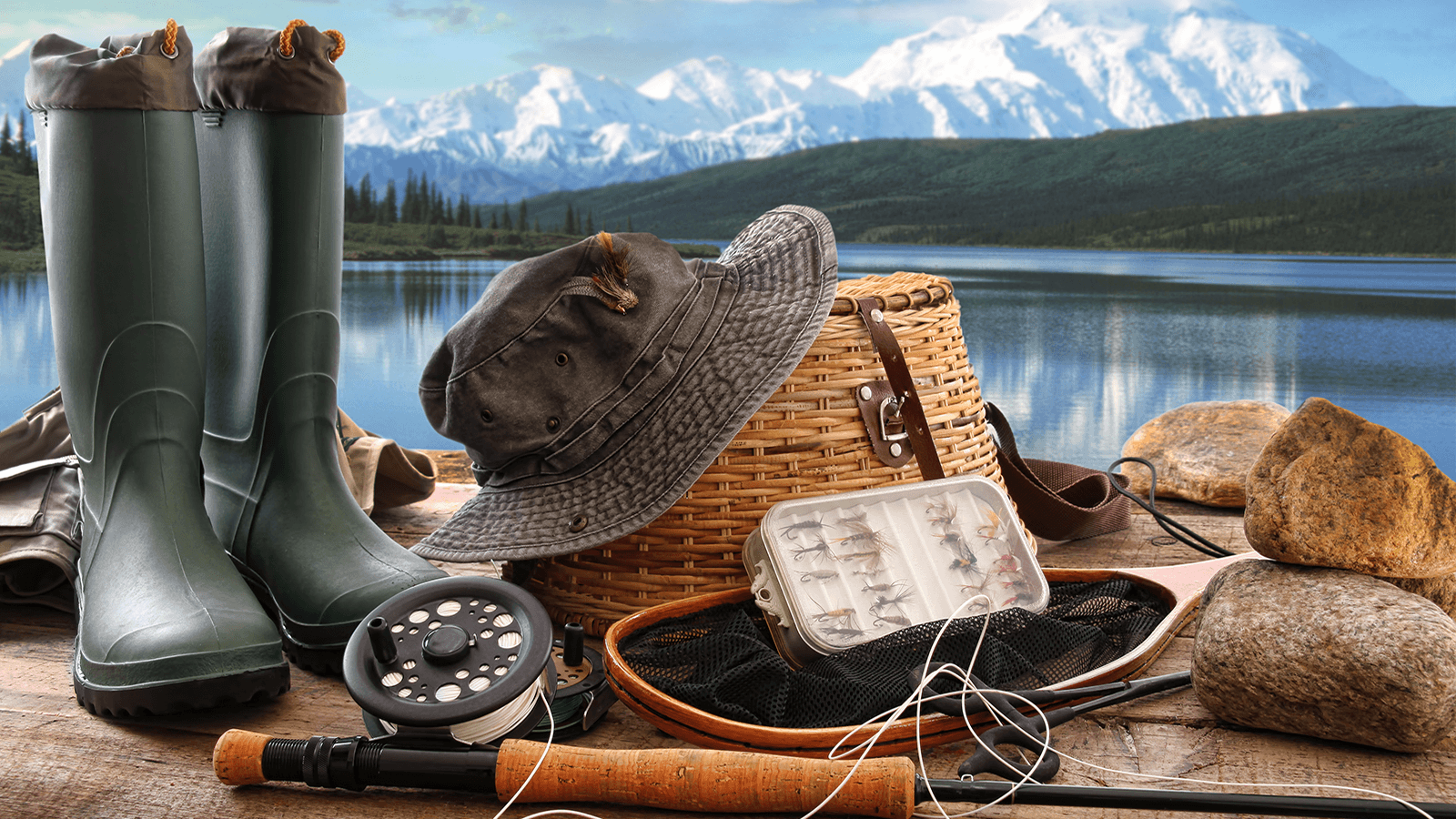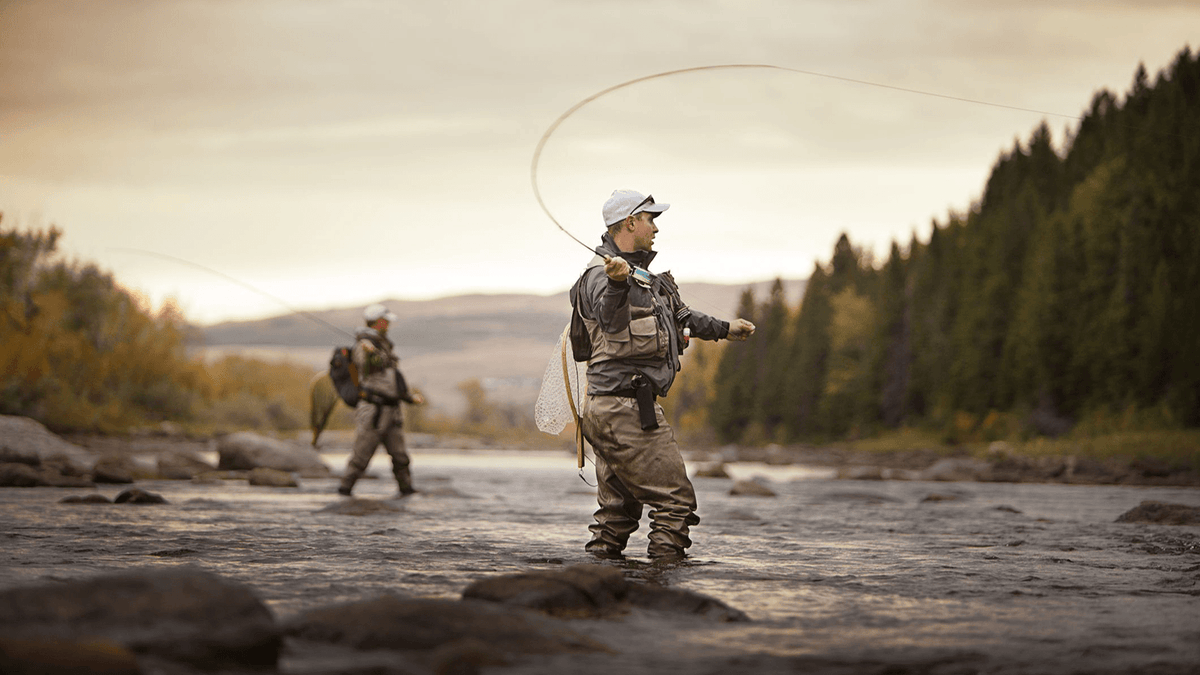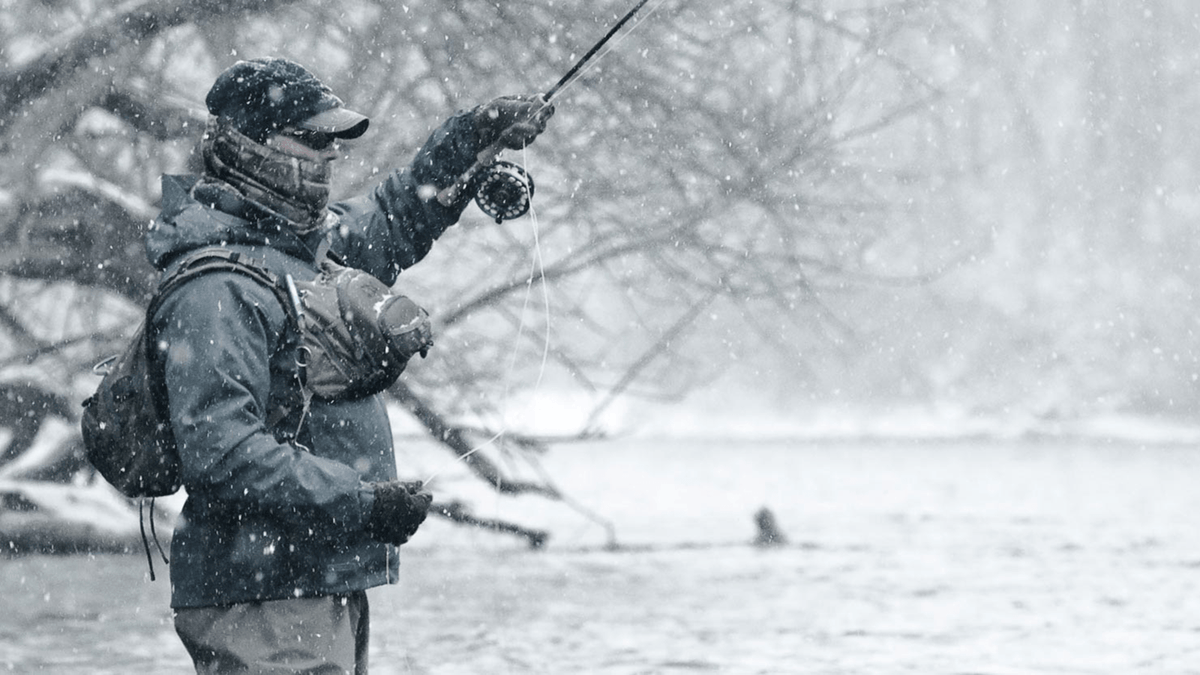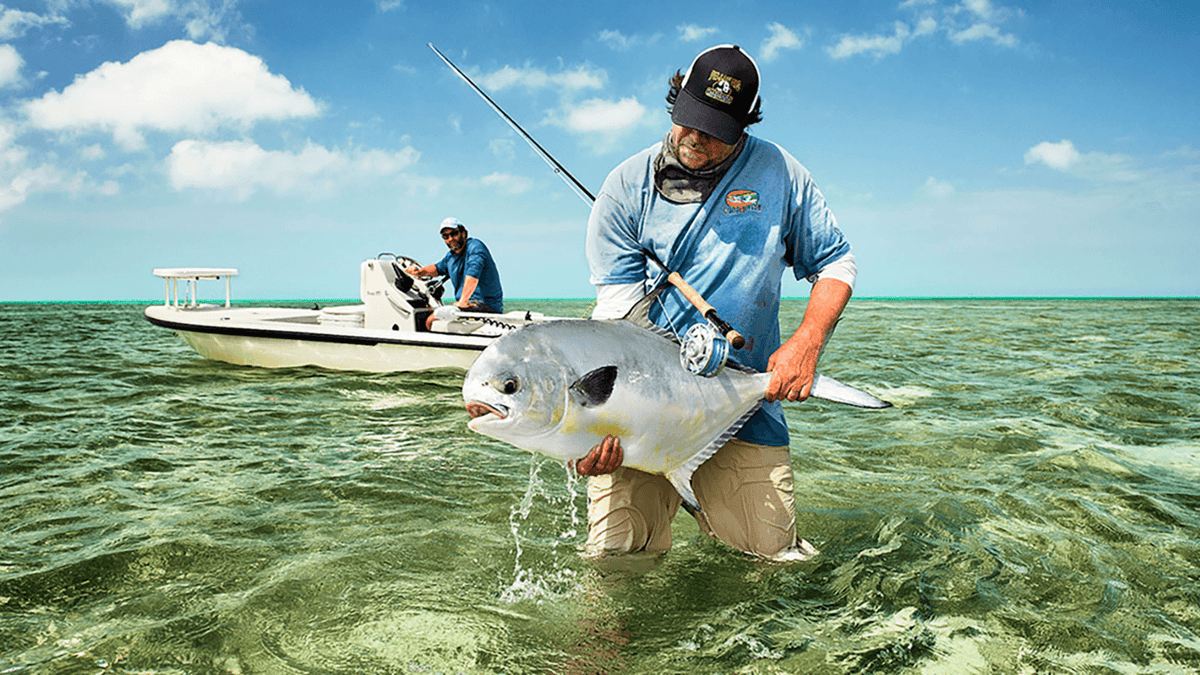Fly Fishing Gear for Beginners: The Gear Needed to Get Started

Fly fishing is a very popular fishing sport that can be both relaxing and challenging at the same time. The following fly fishing gear is ideal of beginners. When you’re just starting out learning to fly fish you’ll want all the help and advice that
you can get from the experts. In future articles, I will drill into each category so that you can put yourself into the best position to catch fish and have fun.
Fly Fishing Rods
There are several things that you need to think about when choosing the right type of rod for you. Every reel and rod has a certain function that you need to be aware of.
One of the first things that you need to consider is comfort. Is the rod that you’re using comfortable for you to hold? If you’re shorter than
about 5’5″ you won’t want to use a rod that is seven feet. Choose a rod length that is easy for you to hold and cast for a few hours at a time.
You may also consider the body of water that you are fishing. If you typically fish a small creek with lots of overhanging trees, a 9″ rod may cause too many hang-ups or you will not be able to cast in areas that you want to.
Most of the rods on the market today are designed to allow you to feel when a fish bites. The shaft of the rod is called a “blank” and when the rod is first manufactured the blank is made from fiberglass, graphite, or other materials. Each of these blanks has an action that is either: light, medium, medium/heavy, or heavy. The upper portion will also have an action that is either: extra light, light, or regular. Both ends of the blank are assembled and the final result is a fishing rod, complete with a handle and guide. No matter what type of rod that you’re using, the “action” of the rod will refer to the “blank”. The action of the rod will have a great deal to do with the type of fishing that you’re doing.
Fly rods also come in different weights. In general, the higher the weight (WT), the heavier the fish it can handle. A trout rod is typically a 4, 5, or 6WT. These can also be used for perch, crappie, and will handle smaller bass.
Fly Fishing Reels
I have to admit that I have a bit of a crush on fly reels. Mostly because of the craftsman ship and design that goes into them. I compare them to watches where you can buy anything from a budget reel to a high end reel that not only performs, but it looks beautiful as well.
For beginners, I recommend choosing a lower price point, under $100, for example, before you move into the higher end reels. I DO NOT recommend a budget reel unless it is truly necessary. If you are paying $20, it will definitely have it’s shortcomings in quality and durability.
Once you choose your price point, decide on what species you are going to target. Let’s say, for example, you are going to fish for trout and smaller freshwater fish, the most important part of picking a trout fly reel is to match the size of the spool to the size of the rod. Your rod be offered in different weights (WT). Fly reels come in designated WTs, too, so matching a 5WT rod with a 4/5 WT reel or a 5/6WT reel is important.
If you are planning on fishing streamers like wooly buggers, I suggest going with a 5/6WT.
Sound a little intimidating? Many stores offer a fly rod and reel combination where the rod and reel compatibility has already been done for you.
Fly Fishing Line
Most of the lines that you’ll use for fly fishing will be made of nylon mono-filament. However, other lines are becoming just as popular such as lines that are (1) braided, (2) co-filament, or (3) fused. No matter what type of line you buy make sure that it’s a “premium” line. Premium
lines are more durable and even than cheaper lines. You’ll want to match the fishing line that you buy to the following criteria and conditions:
• Strength: Strength is measured in the pounds of force that is needed to break the line. You’ll find that most lines will break at higher weights than they are sold at.
• Resistance to Abrasion: When you’re fishing in areas where there are a lot of brush or rocks you’ll want to use a line that won’t break easily when it is constantly rubbed.
• Line Diameter: The diameter of the line will affect the way the line is cast as well as how deep your lure will run. Diameter also has an affect on the visibility and stretching of the line. The thinner a line is the harder it will be for the bass to see it. Thinner lines will also give some bait, such as grubs, a more realistic flowing action. The one good thing about lines with a thicker diameter is that they are better able to withstand abrasion.
• Stretch Lines: Stretch lines won’t break as easily when they are being pulled by a fish. They are beneficial in letting you detect strikes as well as help you in setting hooks.
• Line Stiffness: The stiffness of the line is related to its stretch. The stiffer the line is the harder it will be to cast. The advantage to having a stiff line is that is more sensitive than flexible lines.
• Line visibility: In clear water it’s important that your line is as invisible to the fish as possible. However, you’ll want to have a line that is highly visible when your fishing lures are on a subtle strike, such as worms, grubs, and jigs. This is so that you can easily detect any movement on the line that may indicate a fish is biting.
Fly Line Backing
Fly line backing is a thin, yet strong line that is the first layer of line that is put on a reel. You will attach the backing to the arbor of the reel on one end, wrap it around the spool, then tie it onto your fly line. It is typically made of braided polyester or dacron and comes in 50 – 150 yard lengths. Although it isn’t mandatory to have on your reel, it is a good idea to have for 2 main reasons:
- You will be able to reel in your fly line faster since the size of the thread spool is now larger because of the backing.
- You will have more line available if (or when) you catch a huge trout and they run your line!
Fly Fishing Leaders
When it comes to leaders you have two choices: you can buy them or you can tie your own. If you’re going to tie your own you’ll want to get an instruction book that shows you how to do this. If you’re going to buy them you’ll want to look for a leader that is suitable to the area where you are going to be fishing. For example, if you’re going to fishing for bream (salt water fly fishing) you’ll want to use a light leader that weighs about 2lbs.
Fly Fishing Tippets
A tippet is the section of the Fishing Leader that is tied to the fly. But, as you change flies while fishing, the tippet becomes shorter and shorter. In order to restore or repair the tippet, “Tippet Material” can be used. It comes in spools and is marked by “X”‘s. (3x, 4X, 5X, etc.) The number next to the “X” represents the diameter of the tippet, not the strength. The lower the number, the larger the diameter.
Tippets are an essential part of fly fishing and I recommend always choosing a high quality one. They play an important role in getting your fly to float naturally on, or below the water’s surface. They help make the presentation to a fish more natural.
Fly Fishing Gear – Summary
Once you acquire a fly rod, reel, line, backing, leader, and tippet, you will have the fly fishing gear you need to make your first cast. All you need to do then is tie on some quality flies and you’re ready to drift.
Leave a comment
Comments will be approved before showing up.
Also in Catch the Latest fly flshing news

Wooly Buggers Catch Big Fish

Fly Fishing Flies for Winter – 3 Patterns That Induce Cold Weather Strikes

